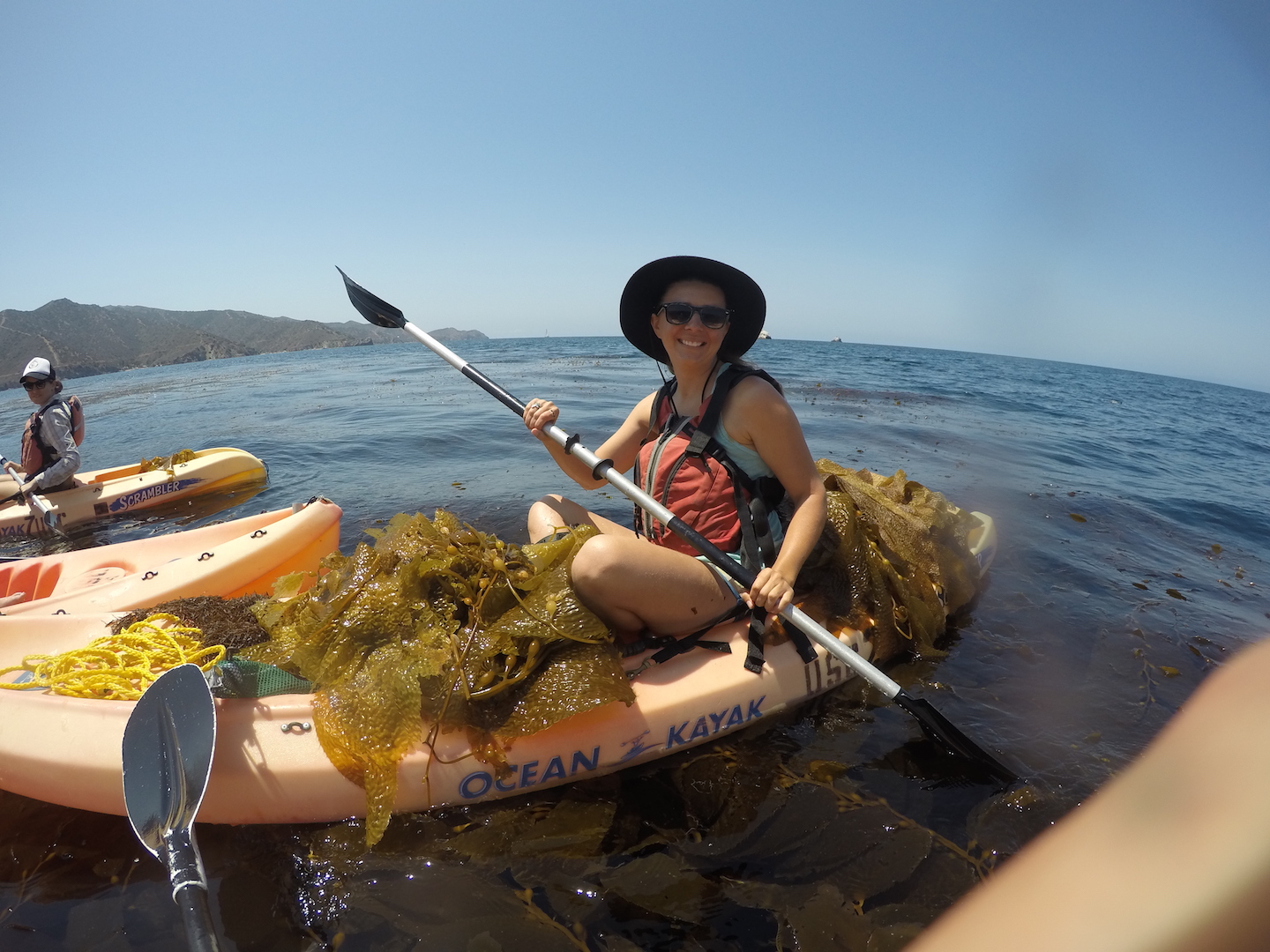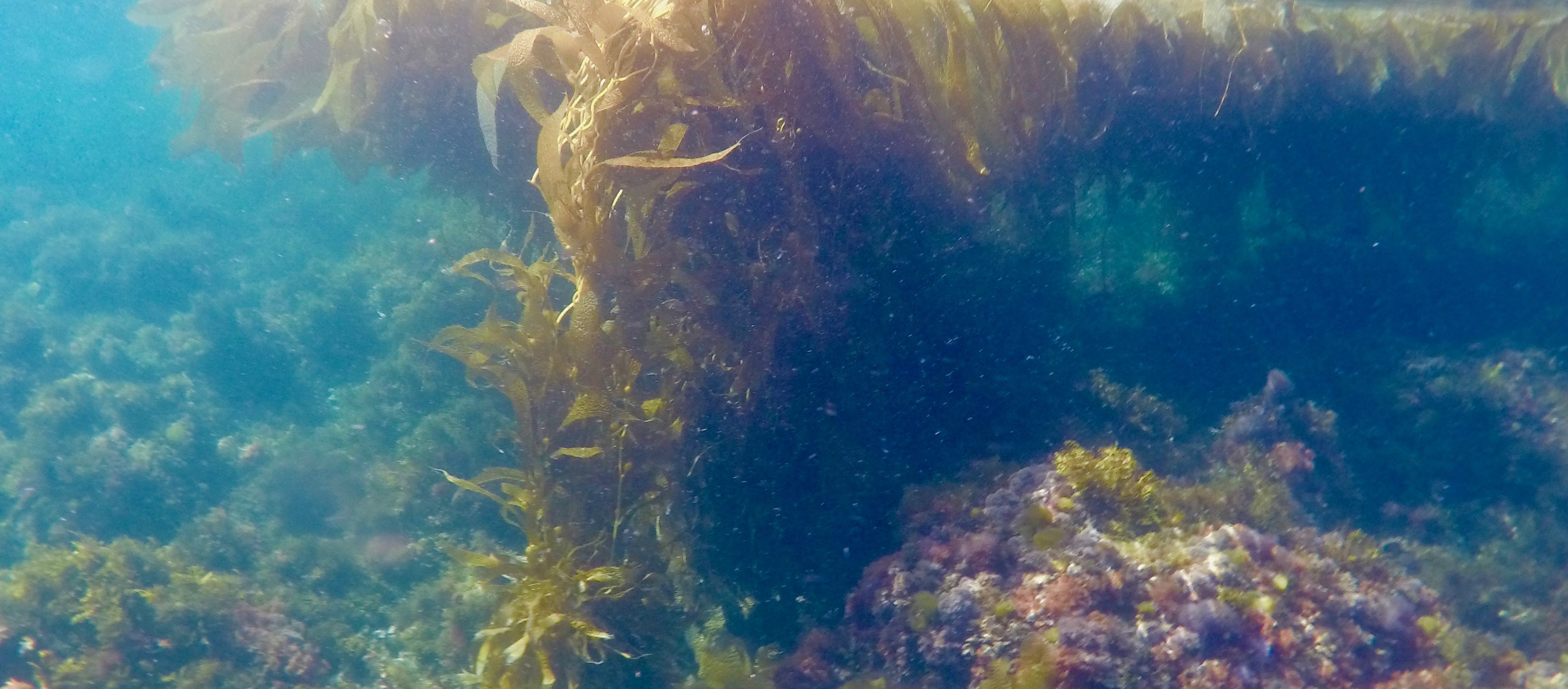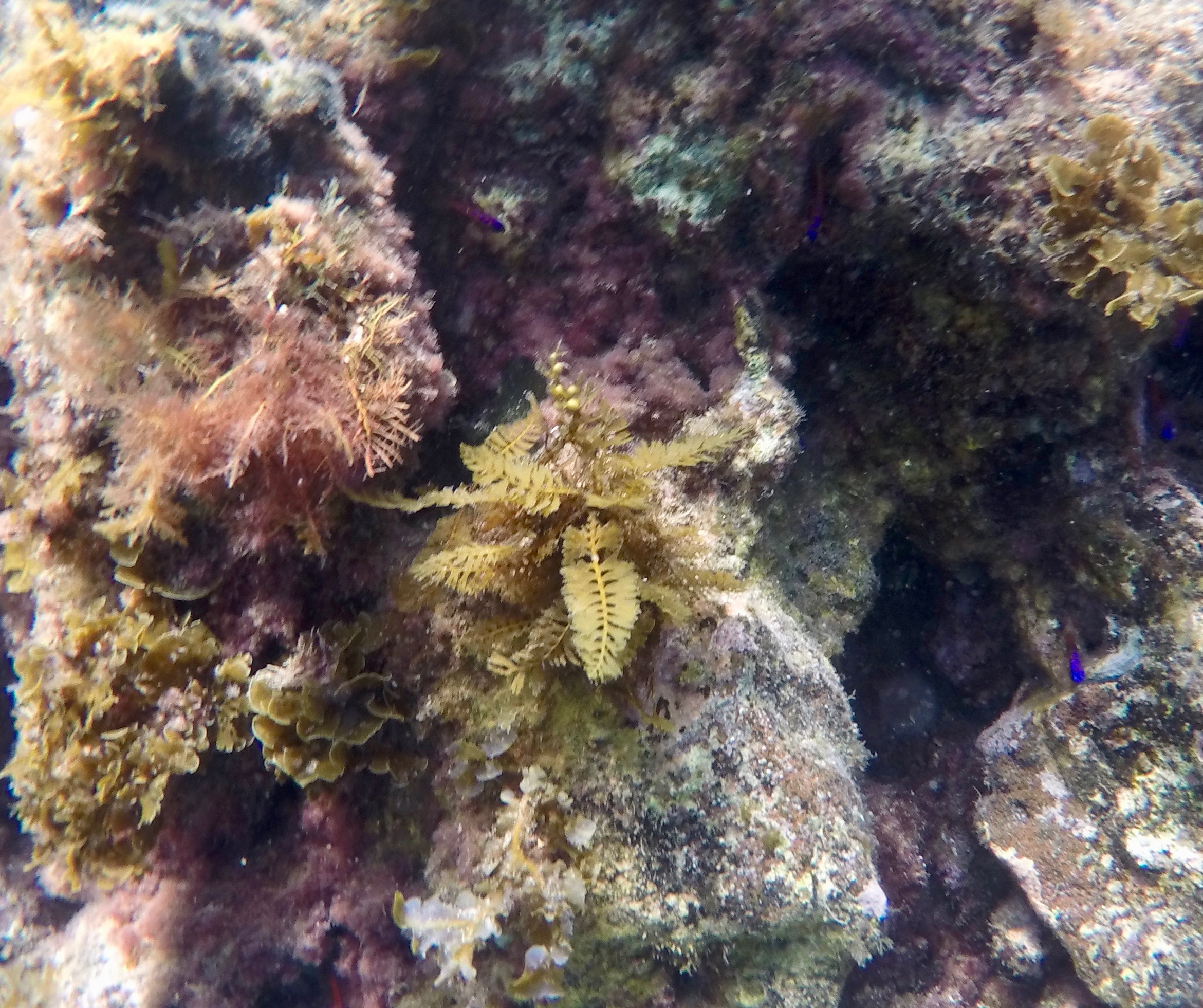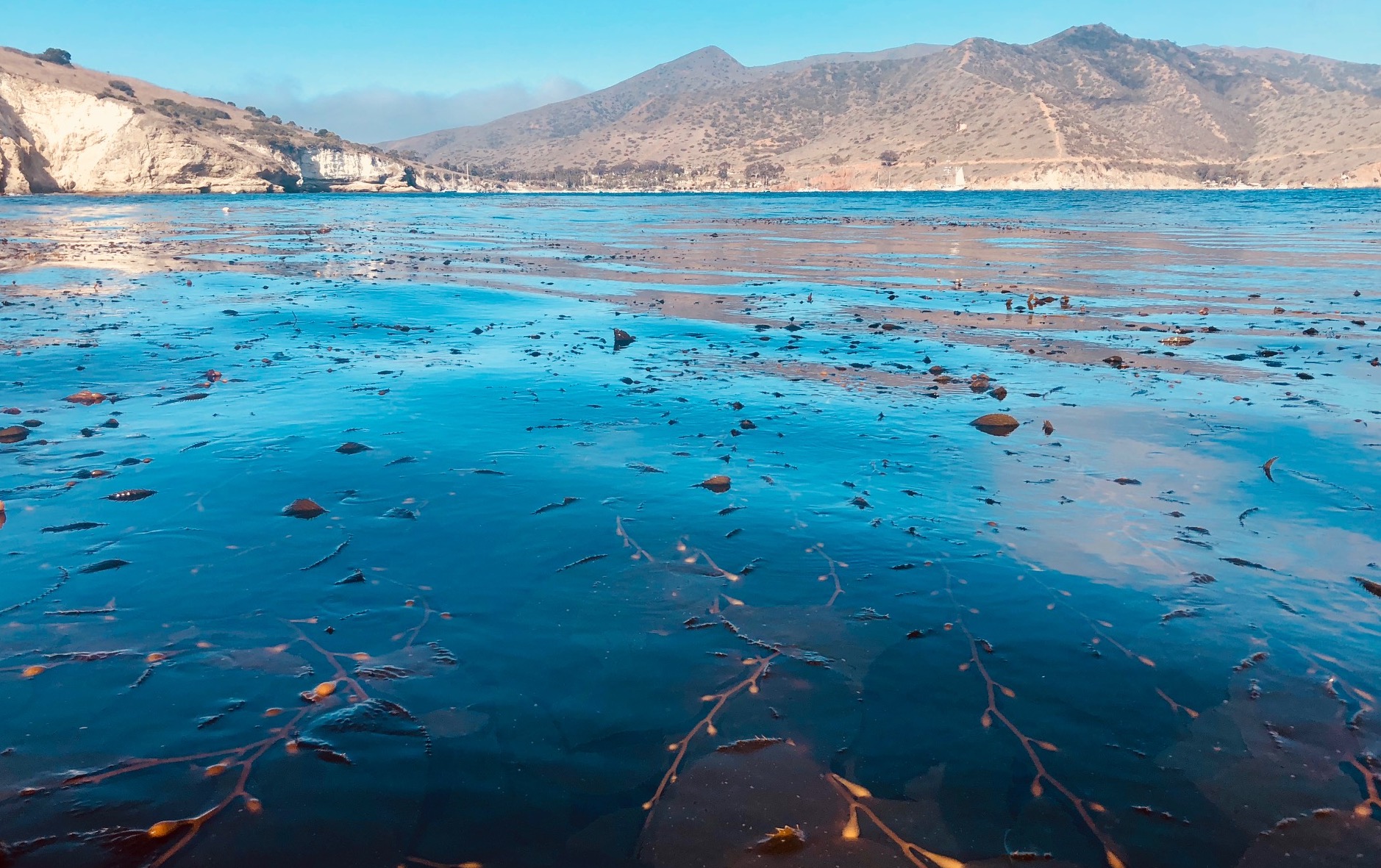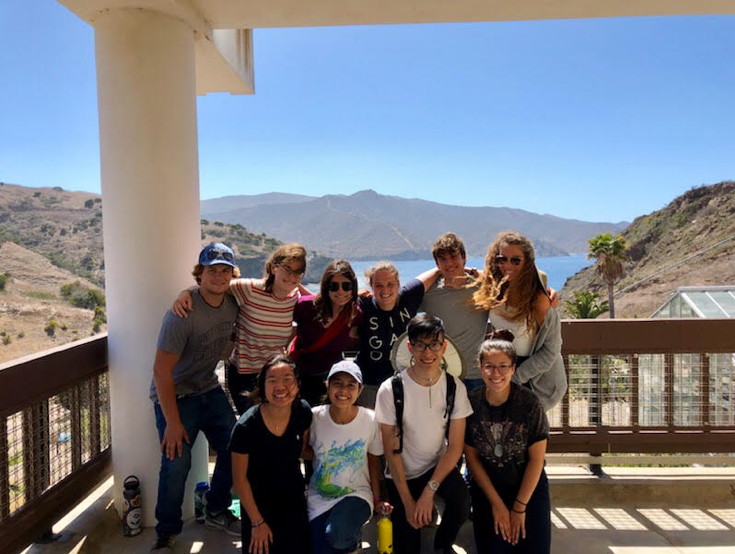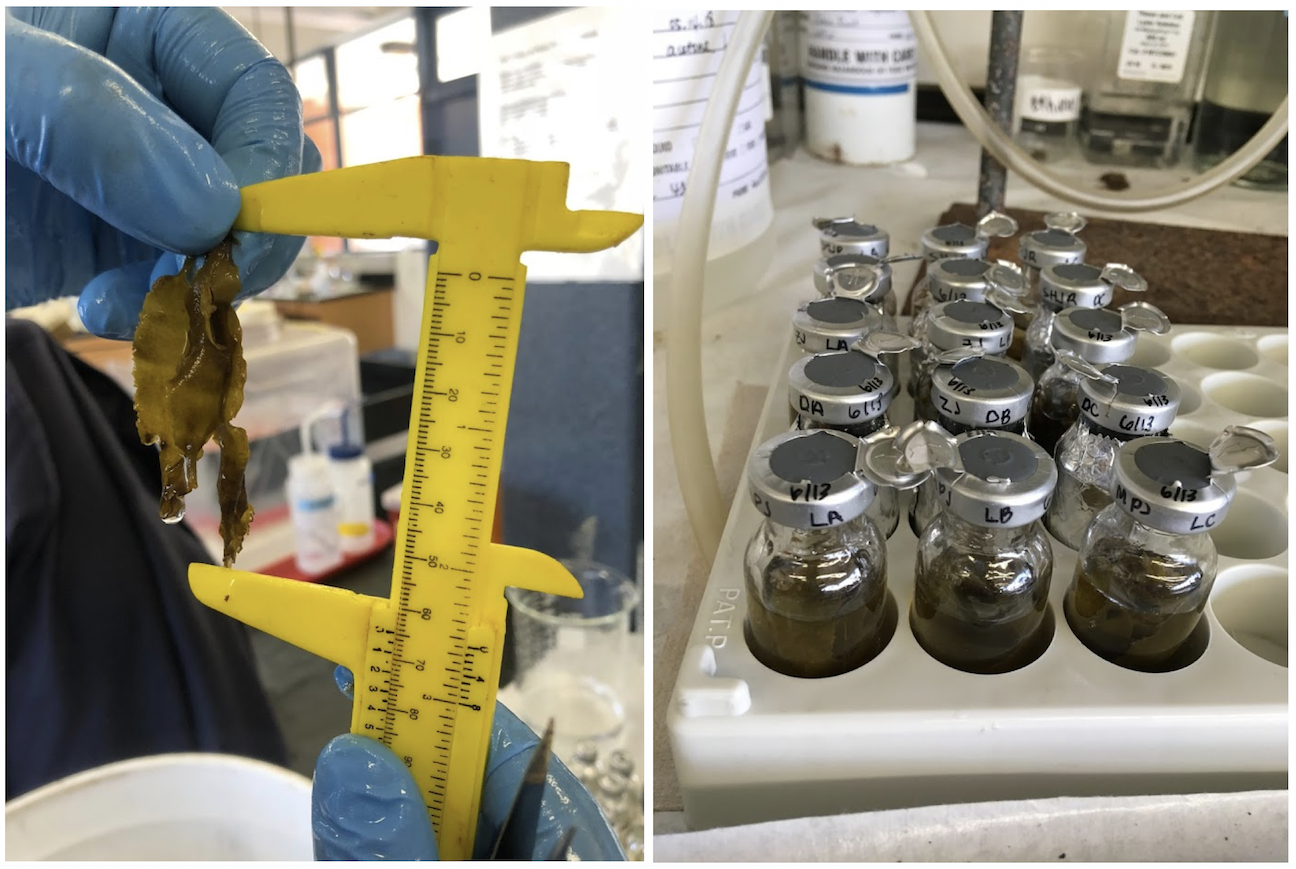By: Ann Bishop, Wrigley Grad Fellow (Moss Landing)
What do a kayak, coffee creamer, and your sushi order have in common? Seaweed. Seaweed or macro-algae is a surprising and important part of what we do everyday. Even before natural products flooded social media or were “on trend”, the ecology and production of seaweed has had a long and varied history with people.
Sushi, seaweed snacks, miso soup, and other food items clearly have seaweed as a component. For example, Nori, though it may appear greenish black in your sushi roll is actually a red seaweed that can be grown in the ocean on lines or cultivated in an aquaculture farm. In fact, farming seaweed is becoming a component in designing sustainable food systems. Even though it under goes processing to become food, it clearly is still seaweed. But, consider products such as coffee creamer, ice cream, and even gel based candies; they often include agar or carrageenan. These two ingredients are actually produced by seaweed. What are they? They are sugars produced by the seaweed and are released from the cells when the seaweed is mashed and/or boiled. They can act as thickeners, and behave similar to pectin, or sweeteners to give food or personal care products a certain texture or taste.
The relation between these uses of seaweed and the kayak is a bit of a stretch, but bare with me. In addition to all the little ways we use seaweed everyday, there are all the ecological reasons seaweed is important up and down the California coast. Here on Catalina, one of the largest and fastest growing seaweeds, giant brown kelp (Macrocystis pyrifera) creates a very diverse and productive underwater habitat-the kelp forest. Charles Darwin while traveling on the Beagle even believed these forests were more valuable then any forest on land because of the amount of life he observed. Giant brown kelp creates habitat, food, and protects other species from sun and waves. There is a whole system of interactions the build up around this one species.
However, during the 2015/16 El Nino the kelp all but disappeared from Catalina. This left space open for Sargassum horneri, a species of invasive brown seaweed, to take over many spaces that used to be occupied by kelp. My research focuses on the interactions between juvenile giant brown kelp and sargassum under changing temperature.
This is where the kayak comes in. Before I am able to track changes through time in growth and reproduction between these species, I needed a way to measure the length and weight of kelp without removing it from the water. Using a kayak I have started my research stay at Wrigley’s Marine Institute by collecting kelp from holdfasts that have been set adrift and will eventually wash up on a beach. These fronds are helping to develop a series of equations that will allow me to estimate how much kelp there is in kelp forests around the island. Understanding how the kelp and sargassum change through time can provide insight into how these species are successful. Understanding how these species operate can aid resource managers in keeping our systems and seaweeds healthy for both the animals and people living here.

